Electronic rider aids are far smarter than us, we head to the track to try and simplify things and find out how to trim the tech to best suit your needs
Words Adam Child Photography Gary Bailey
Fifteen years ago, electronic rider aids had the sophistication of cutting hair with a chainsaw. Consider how an old Nokia phone was considered cutting edge 15 years ago, and how archaic it seems today compared to the latest iPhone. I remember when playing Tetris on my phone was mesmerising, and that was before displays were colour…
Like phones, rider aids such as traction control and ABS have also evolved and, in recent years, accelerated in their development and effectiveness. The advancements in MotoGP and WSBK have filtered down to the end user, me and you.
Take Yamaha’s current YZF-R1, for example, which is equipped with remarkably similar technology to that used by Yamaha in MotoGP in 2012. The list of rider aids has increased from simple traction control and ABS to engine braking assistance, slide control, engine power modes and cornering ABS to name but a few.
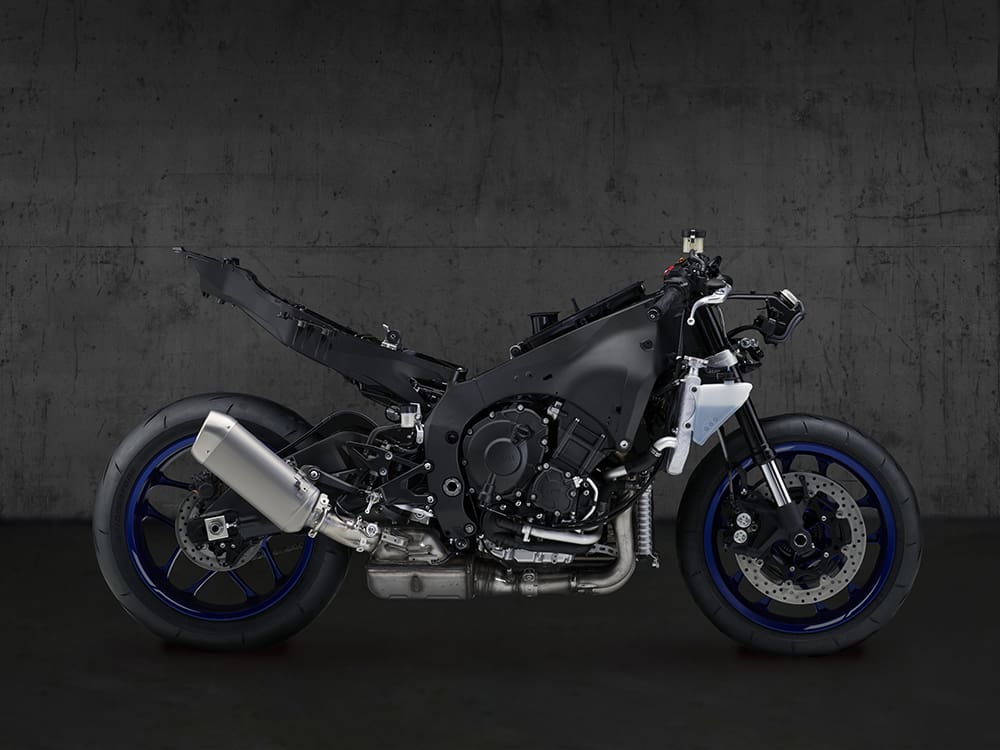
Sophisticated rider aids no longer hinder your fun on the track; instead they enhance your fun while also making the experience safer. A decade or so ago I may have deactivated all rider aids before riding down pitlane because they were too intrusive, but not anymore. Rider aids are there to help you and can be easily tailored to the way you ride, the conditions and the bike.
We want to show you how rider aids work, and what that feels like on track. We will experiment with the R1’s rider aids fully activated, switched off and set somewhere in-between, to suit my style of riding on standard road rubber. We’re not pushing for lap times – this isn’t racing – instead, we’re getting the most enjoyment out of our track day, safely, while riding to the riders’ limitations.
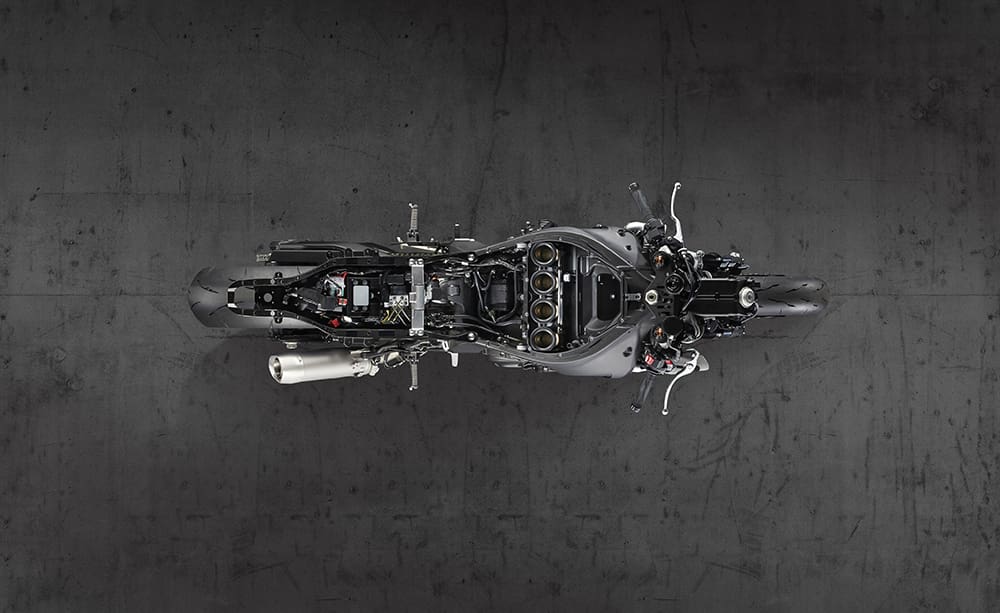
What are rider aids how do they work?
Most manufacturers use a similar Bosch system, which is an off-the-shelf item. The Bosch system is the brains, and each manufacturer tailors that system to work on their bike, to their parameters/algorithm – no, you don’t simply bolt it on and hey-presto. The Yamaha system, however, is vastly different: everything is done in-house and produced by Yamaha using the technologies and skills learned in MotoGP.
Each manufacturer’s system is different as they use different technologies and parameters. For example, manufacturer-A might allow two percent of wheelspin before any traction control intervention, and manufacturer-B may allow five percent of wheel spin. Secondly, the level of tech may be different, again some using the very latest, some using two- or three-year-old tech. And finally, the power and the way a bike makes power, generates grip, brakes, etc, will also differ.
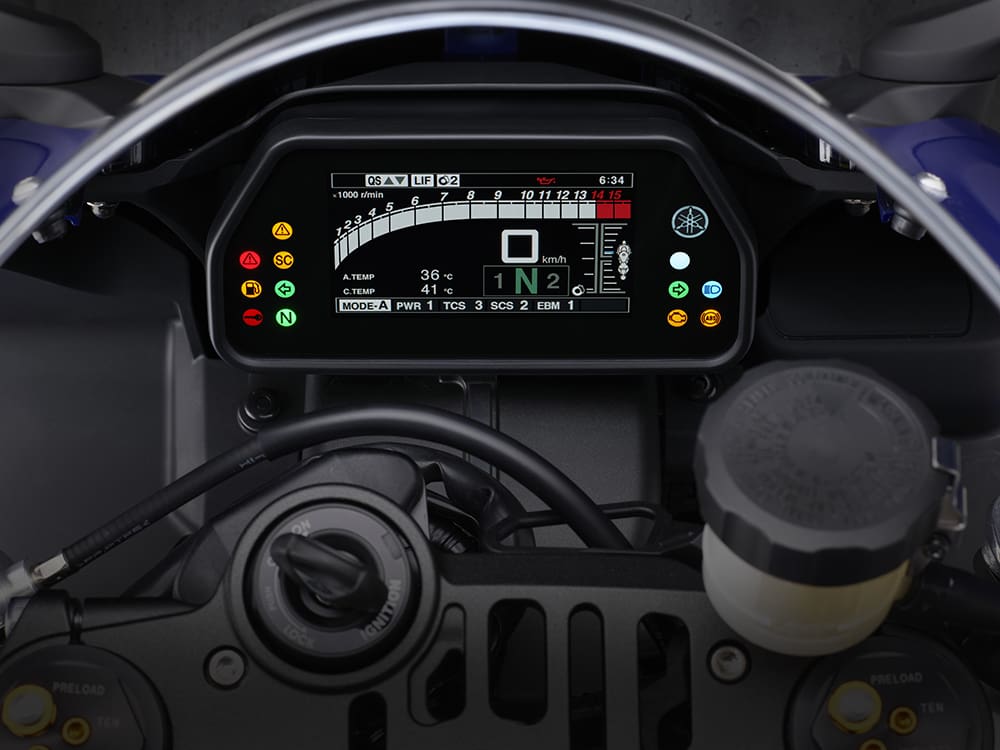
Cornering ABS from a Ducati won’t work on an Aprilia, even if both bikes are using similar Öhlins forks, Brembo brakes and Pirelli tyres. It’s an incredibly time-consuming, complex and expensive task to set up each bike, taking into account all the possible different scenarios. A large percentage is done via clever mathematics, algorithms and simulations, but there is still the need for endless laps and rider feedback in all conditions.
To highlight the difficulties let’s take one example, traction control. The system must detect wheelspin; wheel sensors show the rear wheel is spinning faster than the front, then sends a message to the brain. The brain also gets a message from the throttle: we are at 90-percent open, the gearbox is in first gear, the crank speed shows rpm have risen dramatically, faster than possible without rear-wheel slip. It assesses all these messages and reacts accordingly, reducing the power so both wheels are once again rotating at the same speed. How fast this happens, how quickly these messages are sent, and how quickly it re-introduces the power depends on the bike and tech.
This is an extremely basic example as we haven’t spoken about the lean angle and G-force, which the Yamaha R1 also takes into account.

The plan
It’s relatively simple. After a few familiarisation laps to get used to the track, Yamaha’s YZF-R1 and its standard Bridgestone tyres, we will try a full 20-minute session with maximum rider aids. Then we’ll have another session with the rider aids reduced as much as possible. Finally, we will take full advantage of the Yamaha’s electronic system and tailor the rider aids to match the conditions and the way I ride. We’re not pushing for lap times or racing, we’re simply enjoying the bike and Silverstone safely, using the rider aids as a safety net.
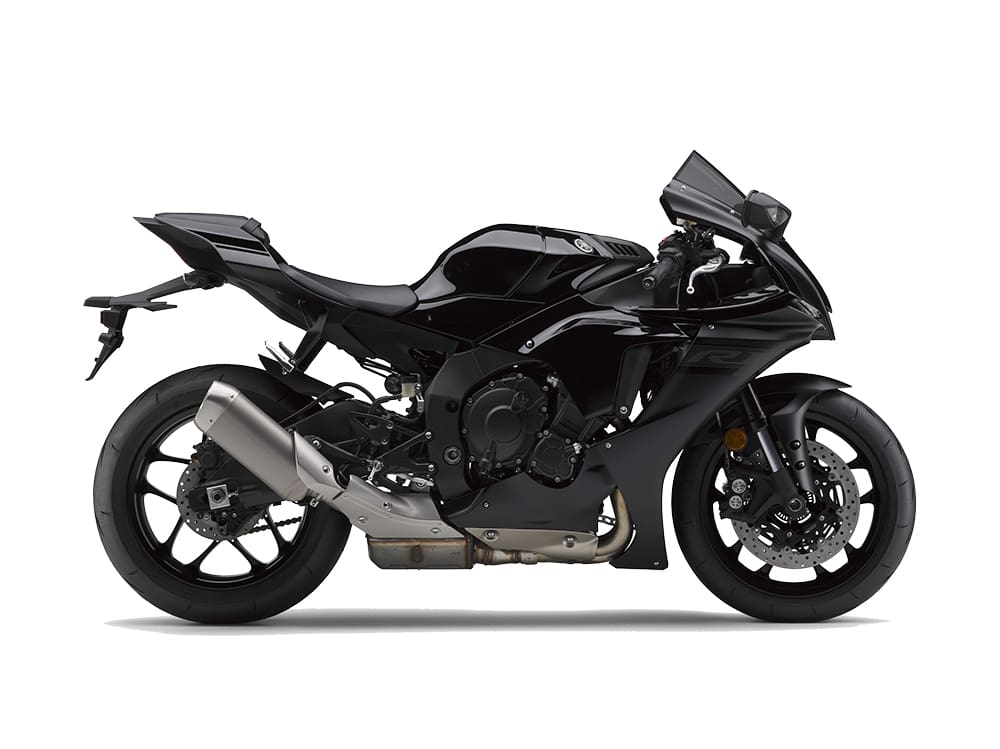
Session 1
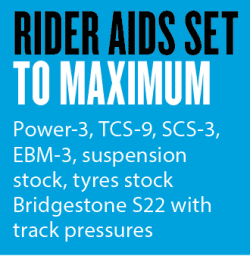
Those with a keen eye for detail will have noticed we’ve not opted for Power-4, which reduces power to 70 percent. We conducted the test at Silverstone, on the GP layout, the extremely fast F1 track. Reducing the power down the extremely quick straight in fast company was deemed unsafe. Therefore, we opted for the softest full-power mode.
It’s a slightly strange experience, as I was unsure what to expect. Years ago, early traction control set to maximum would transform a beautifully fuelled bike into a misfiring mess, but not anymore. In fact, as I leave pit lane with a big handful of throttle the power takes me by surprise. Power mode 3 still gives a full peak output of 146kW (197hp) just with less mid-range and a softer throttle. First time down the Hangar Straight I’m overtaking bikes, despite being in the ‘soft’ mode.
Don’t be fooled, the R1 is still a quick bike, but simply tamed in the low-mid-range. I enjoy the easy power, it’s far less physical to ride. It’s also much easier out of the slower corners as I’m driving smoothly, not drifting wide on the exit or running over the kerbs.
I really like it as it makes the angry, snarling R1 as intimidating as a kitten. A new or relatively inexperienced rider would love this mode, which is fast enough at the top of the revs to take your breath away and fast enough to overtake, but smooth lower down and forgiving too.
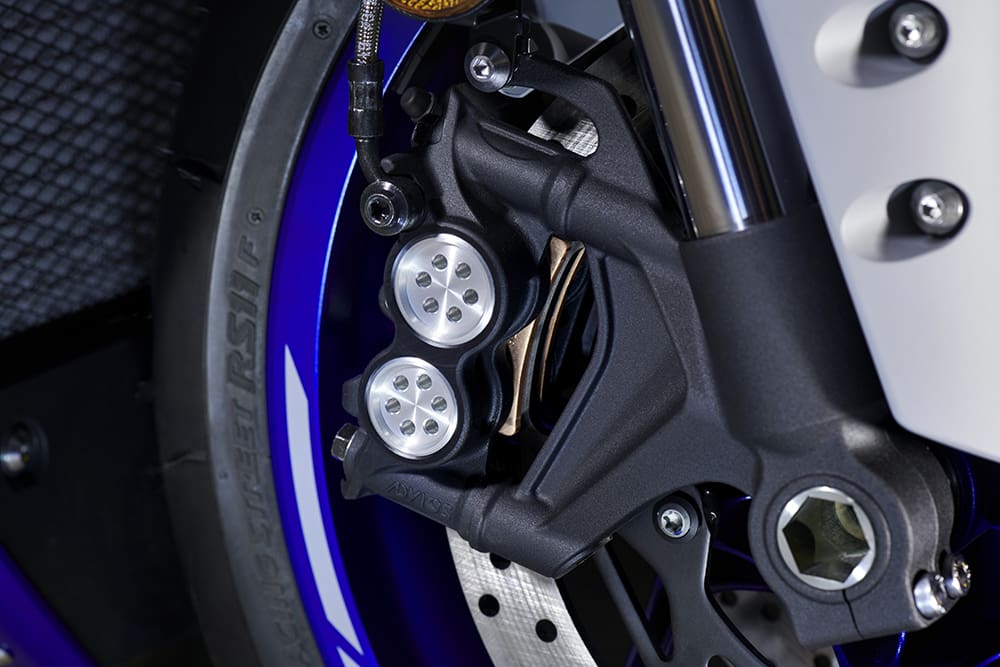
Don’t be fooled; you can still crash (especially on cold tyres), this is not not an infallible motorcycle, but it’s almost comical how early you can accelerate while still leant over. The soft power, combined with maximum rider aids, are the perfect recipe for boosting confidence, especially on the first few laps when the tyres are still coming up to temp.
Again, unlike the electronic systems of a decade or more ago, there is no misfire and no splutter, just controlled power. It’s like walking into a pub and asking for a pint with an aftershock, followed by a whiskey chaser and the landlord serving you a pint of light with a bag of nuts instead. You might want 197hp on a cold tyre with 45-degree of lean, but the bike knows best.
Braking is interesting, as there is less engine braking with EBM-3. This means the engine behaves more like a two-stroke as there is less mechanical braking, while the rear doesn’t lock up when braking heavily. You can’t feel the revs increase on the brakes, but the bike flows beautifully into the corners, especially into Stowe and Brooklands where you carry corner speed into the apex.
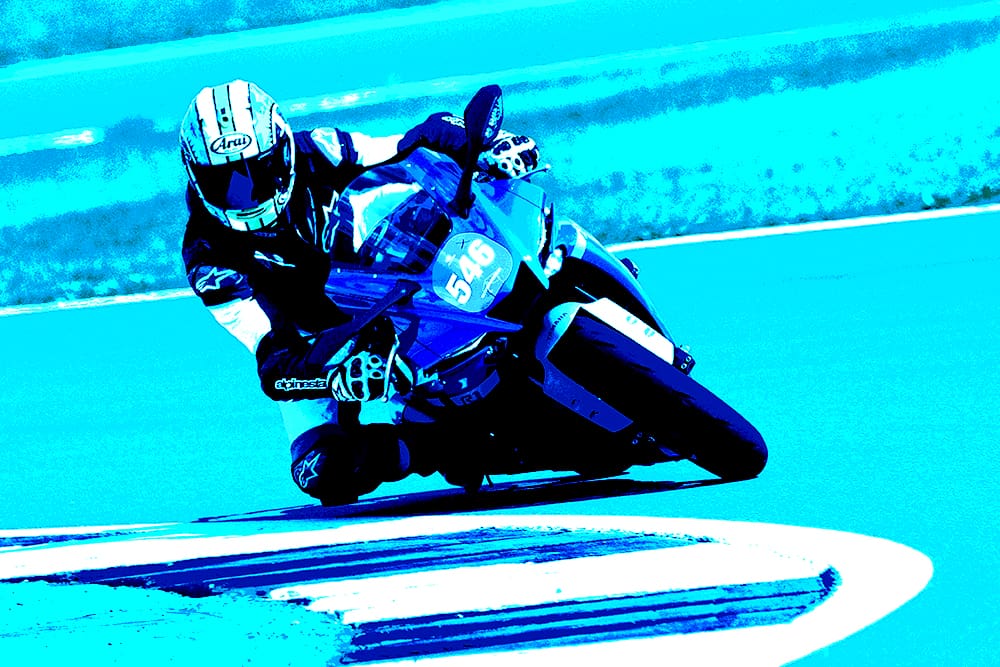
Session 2

I grew up riding two-stokes and I’ve never road raced a bike with electronic rider aids, yet when I ride a bike with the rider aids turned off, I instantly feel nervous. I feel like Bambi on ice for the first few corners, especially on cold road tyres. Today, everyone else is on slicks with warmers and for the first lap everyone is overtaking me – in fact, I was quicker on lap one in session one.
But as the heat develops so does my confidence. The standard R1’s feedback is excellent, you can feel the grip, but it takes more concentration than before, and once we’re up to speed and temperature, I can push on for a quick lap. The throttle is more responsive, there’s more power on tap and the connection feels sharper. When loading the rear tyre on the initial turn of the throttle, you can feel the standard Bridgestone move a fraction, then it grips and digs in as you dial in the power from the cross-plane engine. I’m going faster than in session one, accelerating harder out of turns, but probably accelerating later, waiting a fraction longer, getting the bike upright, pushing on the outside peg. It takes more concentration and effort to ride fast with the slide control removed and more aggressive power.

I didn’t think there would be much difference in the braking performance, but it’s very noticeable. Without the engine brake assist, the now strong engine braking causes the rear to slide when you load the front tyre and the rear goes light.
I had some enjoyable small rear slides into Brooklands. This was fine, not too worrying, but not ideal for a fast lap time and enough to worry someone without track experience.
The longer the session goes on the more I have to work my body position and think about grip, as the rear standard Bridgestone starts to move around. Setting 1 (out of 9) on traction control is for slicks, with warmers, not road rubber, which is designed to work in all conditions, including the wet and cold.

Session 3
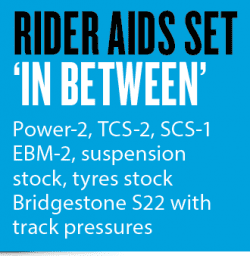
This is the beauty of the R1, it’s easy and simple to trim the rider aids to the style you want. Power mode 1 was a little too aggressive, too sharp, so I’ve opted for 2. I’ve turned back on the slide control and left traction control on 1. Engine braking is in the middle at 2 because I still want some engine braking but not enough to slide the rear.
Now I’m happy, it feels like I’m riding my bike, which matches my riding and tyres. We’re not on elbow dragging slicks, which is why I’ve added a little bit of slide control and traction, just to reassure me.
I can get on the power early with confidence, knowing I have some riders aids if I get it wrong. The power is strong, but the instant turn of the throttle is a little softer and spot on. I’m not pushing for lap times but want that extra drive in the mid-range to overtake slower bikes safely.
The engine braking is precisely where I want it; the rear no longer skids and slithers into corners; instead it’s nice and stable, with just enough engine braking, which means I’m not just relying on the front and diving too deep into the corners.
For a 20-minute track session, I’m happy. Lapping reasonably quickly, safely, hitting my markers without too much effort, and I’m not out of breath on the last few laps. We could have opted for something more aggressive, but it’s a track day, not a race.
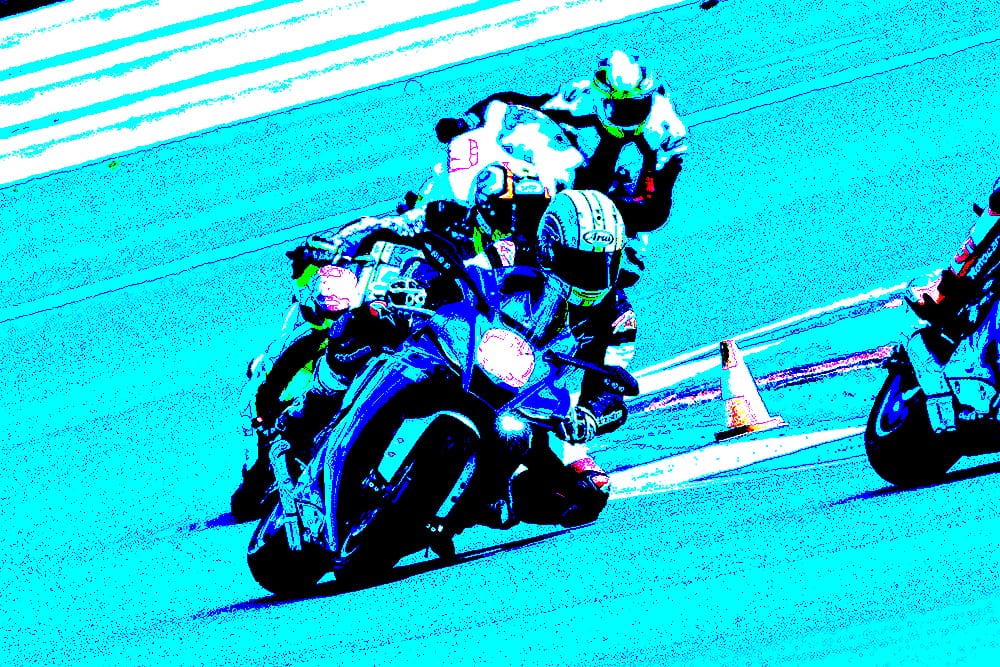
Final session

So many times I see track day riders packing away before the last session because they are tired. How many times have you heard, ‘I don’t want to push it in the last session’? Yes, that is a wise decision, and I was tired after a full day on track, which is why, rather than head for the café, I simply increase the rider aids for the last session. You’ve paid your money you may as well get the miles in and scrape your knee sliders one last time.
Back to the softest power mode to make life easier, I also increase the traction and slide control on the rear as the Bridgestone is now badly worn, and leave the engine braking alone. The track is now emptier and I’m riding a little slower, but still having fun. Even in power mode 3, the R1 is still rapid, and I’m still tucked in on the 260km/h-plus straights, but the acceleration is tamer. More rider aids are controlling the grip, which gives me more time to pick the correct line, and essentially be a little lazier as everything is happening a little slower. While some are packing away, I’m still smiling and having fun, all in relative safety thanks to the rider aids.
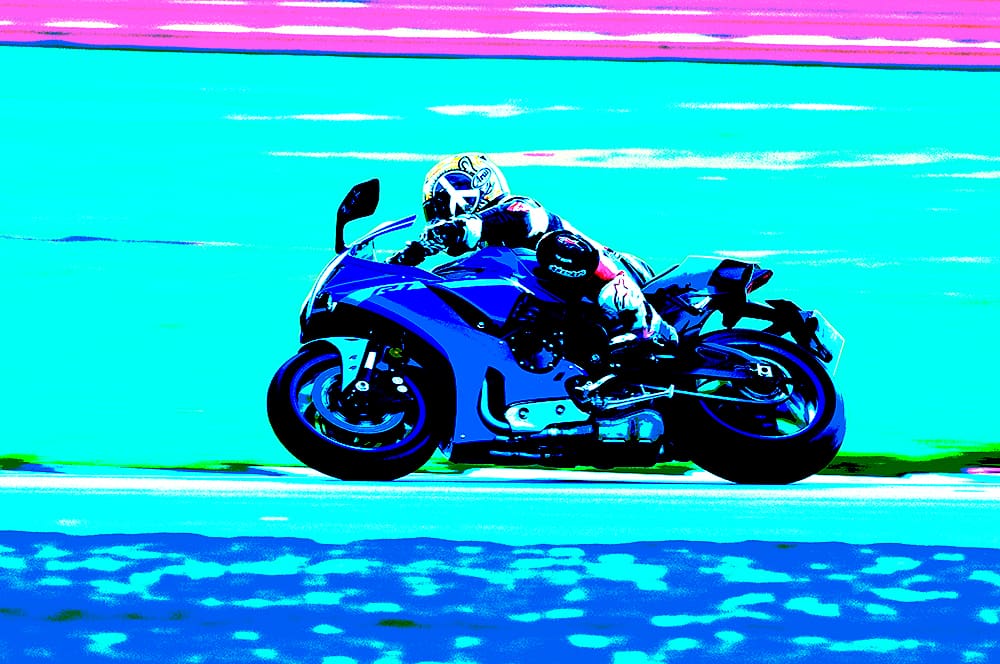
The verdict
I’ll put my hand up. Fifteen years ago I’d remove all the rider aids before venturing out on the track. But now they’re so good, it almost feels strange and daunting to ride without them. Yamaha’s R1 is a proven example, you don’t really ‘feel’ the rider aids working and there aren’t any misfires or alarming spluttering, instead they are an arm on your shoulder holding you back from doing something untoward. Furthermore, they are simple and easy to trim, depending on your abilities and where and how you ride. In Spain, in perfect conditions on slicks, yes, I might choose to remove the rider aids, but back in the real world and normal UK weather, I’ll take modern rider aids every time.
